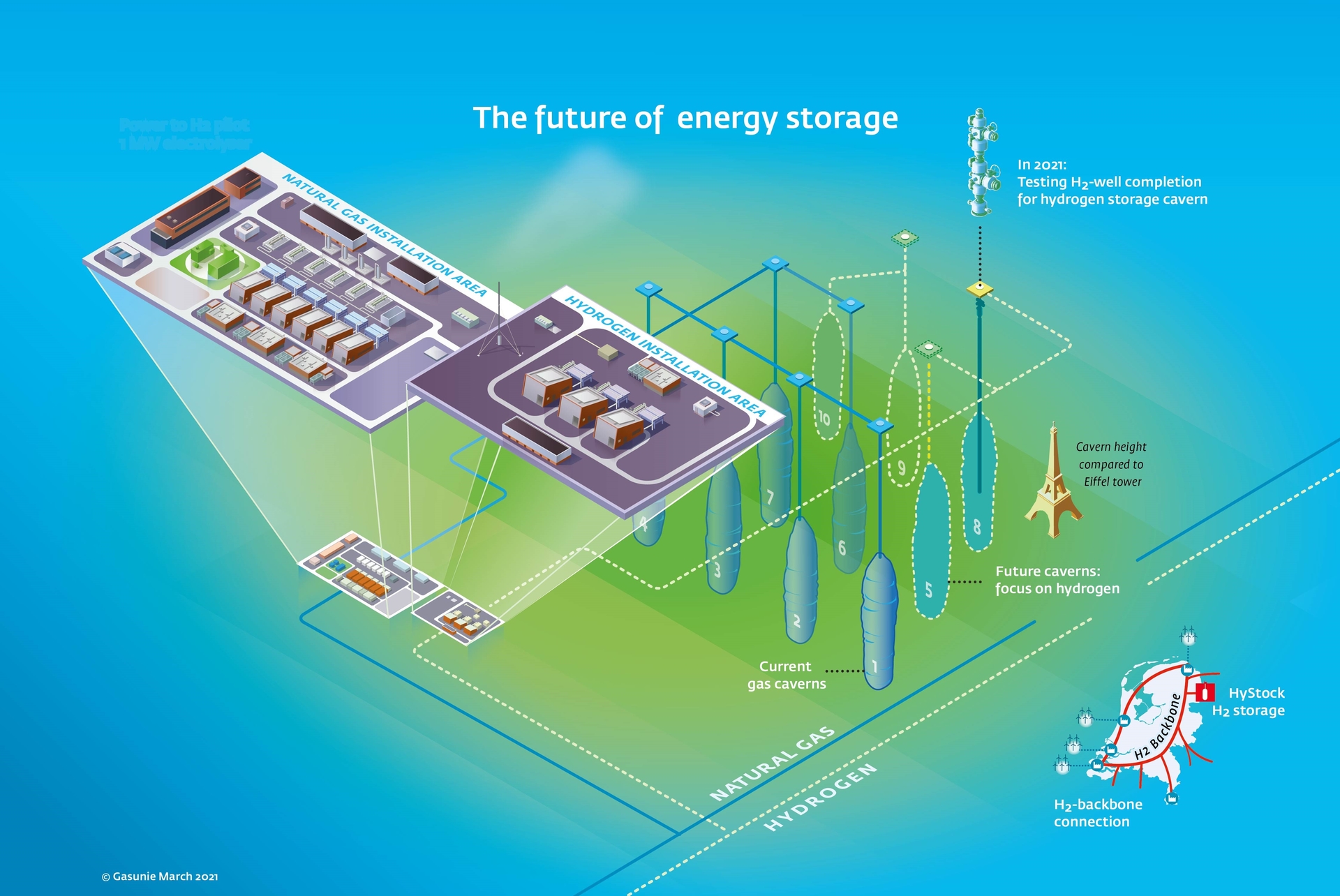The Netherlands – Bilfinger is assisting Gasunie, a Dutch and German energy infrastructure corporation, with the engineering of the HyStock project, an underground hydrogen storage facility near Zuidwending in the Netherlands.
This new facility for storing green hydrogen will balance out any future imbalances in the supply and demand of green hydrogen by storing green energy that is now available in the short and long term from sources like wind farms or solar systems. The Basic Engineering for the complete plant, including the machinery, plumbing, pipelines, buildings, infrastructure, etc., will be provided by Bilfinger Tebodin Netherlands. The green hydrogen will be injected into salt layers deep down by the plant.
Because it has a high energy density, cheap capital costs, and can be delivered simply utilizing the current energy network, hydrogen is a significant source of green energy. Hydrogen is pumped into caverns in the earth’s uppermost strata in order to store the renewable energy for peak demand. The fundamental engineering for the above-ground installation will be provided by Bilfinger. As a result, Gasunie will have a clear understanding of the storage facility’s technical, safety, and environmental needs. Working together for many years, Bilfinger and Gasunie have benefited from the information and expertise gathered from previous natural gas storage facilities.
First hydrogen cavern
Each of the four planned caverns will receive about 76 million cubic meters of hydrogen gas from the compressor facilities. A total hydrogen storage capacity of about 26 million kg is what is intended. A diverse team at Bilfinger with substantial technical knowledge and experience will be in charge of managing the large-scale hydrogen storage site, which is an entirely new strategy. The installation and the country’s first hydrogen cavern are expected to be operational by 2026 and play a significant role in the Netherlands’ hydrogen infrastructure.
Large-scale hydrogen storage in salt caverns is a very promising long- and short-term option from a technical and financial perspective. Finding caves that are particularly suited for quick hydrogen delivery is necessary because buffering hydrogen to balance supply and demand at gigawatt scale necessitates the injection and extraction of enormous amounts of hydrogen in a short period of time. The caverns serve as the hydrogen network’s “lung” and help the Netherlands and the rest of Europe’s overall energy system meet the challenging international sustainability goals.
Photo: Gasunie





